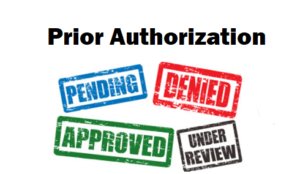- CVS Health eyes kidney patients for next expansion into care (cnbc.com)
CVS Health is now planning to treat kidney failure patients, as the national drugstore chain continues to branch deeper into monitoring and providing care...it will offer home dialysis for patients through its Coram business, and it is working with another unspecified company to develop a new device for that...The companies will start a clinical trial of their device this year...CVS Health will begin its expansion into kidney care with a program that helps identify chronic kidney disease early. It will then connect those patients with nurses for training and nutritional counseling to help delay the need for dialysis...CVS Health Corp. has been broadening its reach beyond drugstores for years. It also runs a pharmacy benefit management business and is spending $69 billion to buy the insurer Aetna. It also has been expanding care offered through its more than 9,800 locations (1,100 clinics).
- 5 ways to streamline prior authorization, improve outcomes (fiercehealthcare.com)2017 AMA Prior Authorization Physician Survey (ama-assn.org)
Physicians say they face long wait times for insurers to process prior authorizations and the delays can negatively impact patient outcomes...The American Medical Association surveyed 1,000 physicians, and 64% said they wait at least one business day for insurers to decide on prior authorization. Nearly one-third (30%) said they wait at least three business days for decisions...The vast majority of physicians surveyed said that lag time can have serious consequences for patients; 92% said the prior authorization process can lead to delays in access to care, and 78% said that waiting for a decision from insurers "sometimes, often or always" causes patients to abandon certain treatments entirely...The AMA survey illustrates a critical need to help patients have access to safe, timely and affordable care, while reducing administrative burdens that take away from patient care...Six major industry groups—including America's Health Insurance Plans and the AMA—joined forces to improve the prior authorization process. The groups agreed to five steps:
1. Reduce the number of healthcare professionals subject to prior authorization requirements based on their performance, adherence to evidence-based medical practices or participation in a value-based agreement with the health insurance provider.
2. Review the services and medications that require prior authorization on a regular basis and eliminate requirements for therapies that no longer warrant them.
3. Improve communication between health insurance providers, healthcare professionals and patients to minimize delays in care and ensure clear prior authorization requirements, rationale and changes.
4. Protect the continuity of care for patients on an ongoing active treatment or a stable treatment regimen when there are changes in coverage, insurance providers or prior authorization requirements.
5. Accelerate industry adoption of national electronic standards for prior authorization and improve transparency of formulary information and coverage restrictions at the point-of-care. - The Other Side of Opioid Limits (drugtopics.modernmedicine.com)
Proponents argue that limits reduce the risk of addiction, but are they keeping pharmacists from caring for their patients?... As the opioid crisis worsens, pharmacies, pharmaceutical manufacturers, and legislators are scrambling to help solve the problem. Recently, those efforts have focused on limiting opioid supplies. But in the effort to prevent unnecessary medications, are pain patients getting left behind?...Express Scripts and CVS Caremark recently announced a seven-day supply limit, and PhRMA...supported a seven-day limit...one-size fits all approach and will supplant providers’ clinical decision-making and the needs of patients who have legitimate need for these medications...payer limits restrict patients with legitimate pain management needs from accessing opioids. Those limitations...will force patients not at risk of abuse or misuse to work with their prescriber and pharmacist—which will cost the health-care system and “significantly” impact patients with limited resources, physical restrictions, or transportation issues...
- MP group wants pharmacist prescribers and minor ailment scheme in England (pharmaceutical-journal.com)
All-party parliamentary group recommends community pharmacy play a bigger role in the NHS to take pressure off Gps...Giving all community pharmacists the opportunity to become prescribers by 2022 and introducing a minor ailment service throughout England are among a series of recommendations made in a report by the All-Party Pharmacy Group, following an investigation into the impact of government reforms...The APPG, which is made up of a cross section of MPs with an interest in pharmacy, has also called on NHS England to outline their strategy for implementing the recommendations of the Murray Review into "community pharmacy clinical services"…Community pharmacy is a highly valued, but an underutilised resource, the APPG said, and the profession needs to play a more integrated role in both primary care services, and the treatment of patients with long-term health conditions...The health service is facing huge challenges due to patient demand, and by working to develop services, community pharmacy can shoulder some of the burden facing GPs, and other parts of the NHS...
- Study Estimates Nonoptimized Medications Cost the U.S. $528.4 Billion Annually (ptcommunity.com)
Researchers propose that pharmacists can help improve medication-related care and lower costs...the actual cost of prescription medications is more than just the dollars and cents on the bill, according to a recent study. Researchers...estimate that illness and death resulting from nonoptimized medication therapy costs $528.4 billion annually...when you’re sick, a health care professional prescribes you a medication, you take it as directed, and you get better...But what happens a lot of the time is the medication regimen is not optimized...the prescription may not be exactly appropriate for your indication—not quite the right medication or dose—or you just don’t take the medication for whatever reason, don’t take them as directed, or the medication causes an adverse event or a new health problem...the current cost of each possible consequence...illnesses and deaths that result from nonoptimized medication therapy to be $528.4 billion...Nonoptimized medication therapy is a massive avoidable cost. If medications were prescribed, monitored, and taken properly, we wouldn’t face this cost, and patients would be healthier...To improve medication-related care...authors...would like to see a systematic and coordinated effort to break down prescriber–pharmacist silos and expand comprehensive medication management programs, in which clinical pharmacists have access to complete medical records, improved dialogue with other members of a patient’s health care team, and input as a medication is prescribed—similar to what is now taking place at many U.S. Veterans Affairs clinics.
- ASHP Survey: IV Fluid Bag Shortage Affecting Patient Care (ptcommunity.com)
Pharmacists call shortage of small-volume parenteral solutions "severe"...The shortage...is affecting virtually all U.S. hospitals, according to results of a survey by the American Society of Health-System Pharmacists... that limited inventory of the critical product has required health care providers to adopt new procedures and use alternative therapies to treat patients...Survey respondents are taking a variety of steps to mitigate the shortages, including using alternative methods of administration such as intravenous push, intramuscular injections, or oral dosage forms; using nonformulary premixed solutions and/or frozen products; and implementing protocols that restrict the use of product...The shortage of SVPs is the latest in a series of shortages of critical medications, including sodium bicarbonate and epinephrine. Drug shortages pose a significant threat to the safety and quality of patient care in hospitals and other health care settings and may result in delayed treatment and increased risk of adverse reactions and medication errors...“We strongly believe that the current drug shortage situation is unacceptable and unsustainable,” said ASHP CEO Paul W. Abramowitz, PharmD...“It threatens harm to patients, wastes valuable health care resources, causes great uncertainty, and disrupts the health care system.”
- New Oregon Law Lets Pharmacists Prescribe Formulary Drugs, Devices (ashp.org)
As early as January 1, Oregon pharmacists will be permitted to prescribe and dispense drugs and devices listed on a formulary to be established by the state board of pharmacy under a bill recently signed by Governor Katherine Brown...The formulary, according to the new law, may contain such "post-diagnostic" items as diabetic testing supplies, smoking-cessation aids, epinephrine autoinjectors, albuterol inhalers, rapid strep tests, and spacers for inhalers...Other possibilities mentioned in the law are discharge medications during transitions of care and emergency refills of insulin..."Nothing about this is new territory," said Michael E. Millard, cochair of the Oregon Society of Health-System Pharmacists...Legal and Regulatory Affairs Committee, in explaining why the prescribing bill passed the legislature on the first try...the bill builds on past legislation and advances pharmacy practice a step further...
- Come for your drugs, leave with more shopping: Walmart’s new growth strategy? (reuters.com)
Walmart Inc’s efforts to develop closer ties with health insurer Humana Inc, which came to light...point to a brave new world of retail where superstores become healthcare centers offering basic medical care...They are also aimed at boosting Walmart’s slowing growth in brick-and-mortar store sales as it faces increasing pressure online from Amazon.com Inc. Deepening its existing partnership with Humana, or even acquiring the company outright, could be a step toward turning its 4,700 or so U.S. stores into healthcare centers that aim to attract more shoppers over 65...The end goal here is to get more people in their stores, get them to buy drugs and make an additional purchase while they are in the store...If Walmart can offer “competitive rates” on primary care and other health services...it “can grow traffic and push store visits.”...“It allows them to get ahead of everybody from warehouse club operators like Costco, Target and other retailers who run chain drugstores as well as food and drug combo operators like Kroger and Wegmans.”...
- Few California pharmacists prescribing birth control (reuters.com)
A California law allowing pharmacists to prescribe birth control sought to make it easier for women to obtain contraception, but few drug stores provide the service... Only 11 percent of retailers in the state offered pharmacist-prescribed contraception one year after the law went into effect, the research shows...Our findings strongly suggest that more pharmacies need to offer this service to live up to the promise of widespread, easier access to birth control...Four states - California, Oregon, Colorado and New Mexico - allow pharmacists to prescribe contraceptive pills, patches, rings and injections after training about how to assess health risks and counsel women on contraceptive choices... Most stores that offered the service charged a fee...Under the Affordable Care Act, insurance carriers must pay for family planning consultations with healthcare providers. But the law does not cover pharmacists...Oregon requires Medicaid to pay pharmacists for the service. California’s law has a similar provision, but it doesn’t take effect until 2021...
- Scottish government backs new integrated five-year pharmacy degree for 2020 (pharmaceutical-journal.com)
A five-year integrated pharmacy degree, leading to pharmacist registration, is set to be introduced throughout Scotland in three years’ time. However, the detail of how the workplace learning will fit into the degree timetable and which model to adopt, has not yet been decided...Shona Robison, the Scottish secretary for health and sport, is backing the proposal from the special advisory group that...published its report, ‘Five-year integrated initial education programme for pharmacists in Scotland’…"Given our current focus on workforce planning and development and the extending role of pharmacists within multidisciplinary teams, this report provides a real opportunity to better prepare our new pharmacists for practice in Scotland by ensuring they are able to practice in the evolving NHS health and social care landscape."...there is also a need for more "enhanced experiential learning in clinical practice" and a recognition of the benefits of workplace learning which can reinforce confidence and professional competence...The new degree also supports the Scottish government’s priorities to strengthen the primary care workforce and its desire for every GP practice to have access to a pharmacist with advanced skills...










